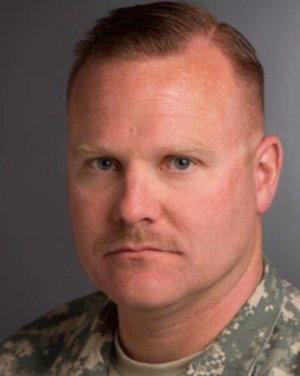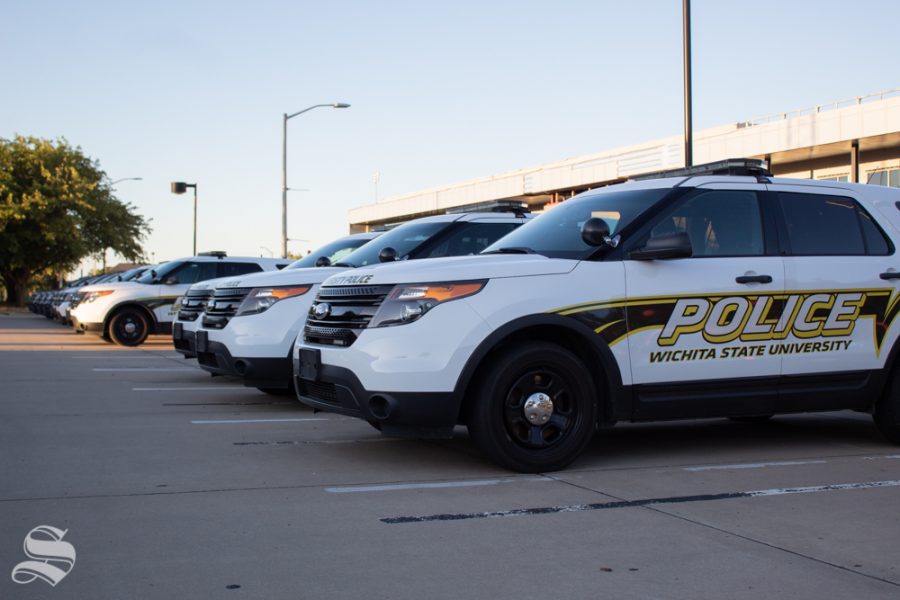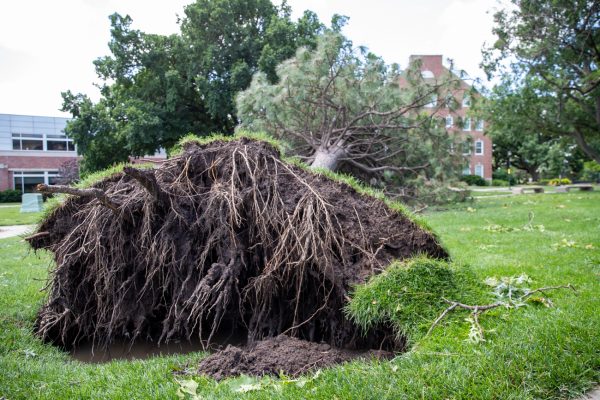Q&A with Chief Rodney Clark: How is WSUPD structured?
A line of Wichita State University Police Department patrol cars line department’s parking lot. On Sept. 13, campus police responded to a break in at Alpha Phi Sorority.
Whether you’ve seen them at on-campus games and events, or you’ve seen them rolling around campus in patrol cars — most people at Wichita State are familiar with the University Police Department.
But seeing the police presence on campus raises some questions about the department’s structure and operations that are not immediately obvious.
What is their jurisdiction? How many officers are on staff? And how do they divvy up patrolling duties?
Chief Rodney Clark, who took over as the head of WSUPD last year, sat down with The Sunflower to answer a few of these questions. Some responses have been edited for length or clarity.

Major Rodney Clark was named the new chief of Wichita State University police last year.
How many officers are on staff? What is the chain-of-command?
“I am the chief and then we have two captains: one captain over the operations division, and the other is the support-division captain. The operations captain is over all the police officers.”
“There are 32 police officers for the department. We fluctuate around 44 or 45 total [staffers], but that includes our own dispatch section, parking officers, … an IT person.”
“The Department of Justice does studies on how many police officers should be on a college campus, and actually for a student body of 15,000, we should be between 36 and 38. So we’re a couple short of what’s federally recommended, not mandated, based on that study.”
Do you assign patrol routes or sectors to cover the entirety of campus?
“We do still assign sectors, but we’re such a small campus, just for the purpose of [administration], we might say where somebody’s primary sector is. But because of the small campus, they overlap in each other’s sectors.”
“If we were a larger campus or within a city the size of Wichita, you would definitely have to stay in harder areas. As far as their patrolling routes, we practice being highly visible, [which] serves as somewhat of a deterrent factor for anybody that might be a wrong-doer. And I’m not necessarily talking about the college community but anybody from the community.”
“In addition to that, [visibility] also helps people know where you are if they’re in need of assistance.”
What are the officers’ schedules like?
“That breaks down to three details — or three shifts if you will. Basically a day shift, and then second shift, and third shift is the overnight shift.”
“The officers currently are in 10-hour days and they’ll either work the first half or the latter half of the week [including weekends], having three days off duty — unless they get called in for overtime for special events.”
Where is your jurisdiction? Does it ever overlap with that of the Wichita Police Department?
“Sometimes [we operate] in each other’s jurisdiction. If you’re operating in someone else’s area or jurisdiction, it’s a professional courtesy to ask them or let them know.”
“That happens a lot here at the university. A student could be living out in the city of Wichita or in Sedgwick County, and we might go out to do a welfare check because they’re still a WSU student.
“Same thing if somebody is posing a threat against WSU. We’re still Kansas police officers and we can go out and investigate that threat — especially someone that’s affiliated with the university like a student or faculty 0r staff.”

Daniel Caudill is the former editor in chief for The Sunflower. A staffer at the paper since 2017, Caudill first covered Student Government Association...









